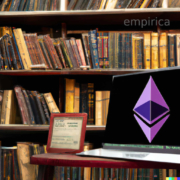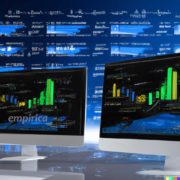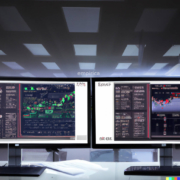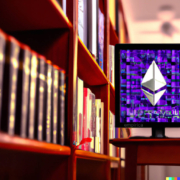Is crypto market making profitable?
How do market makers make money?
Market makers are financial companies that buy and sell securities or other financial instruments at the market price, quoting prices for other market participants. They make money on the bid-ask spread, which is the difference between the price at which they are buying a financial instrument and the price at which they will sell it.
For example, if a market maker wants to buy BTC for $20,000 and sell it for $20,010, he will earn $10 for every bitcoin bought and sold.
An additional source of revenue for market makers comes from liquidity provision fees from the tokens or exchanges where they engage in proprietary trading. These are the so-called designated market makers and are most often obliged to provide liquidity with the parameters specified in the agreements with these entities.
Factors influencing the profitability of the market maker’s activity
The profitability of market maker operations depends on many factors:
- The already mentioned bid-ask spread. A wider spread usually means more profit per trade, but it often deters other traders, and there are fewer trades
- Trading volume on a given instrument – more trades, more profit potential for the market maker
- Market volatility. During periods of high market volatility, market makers can earn higher profits due to increased volumes and broader spreads. But at the same time, they are exposed to a much greater risk of unbalancing the position and incurring losses.
- Transaction speed. If market makers can execute trades fast, they minimize the risk of being taken advantage of by informed market participants. However, speed requires having a low-latency trading platform to trade more efficiently. However, the costs of building low-latency market making systems are very high.
- Risk management. Market makers must have adequate risk management strategies to limit potential losses. This also means investing in the proper infrastructure and processes.
Optimizing the above factors can improve the profitability of market making operations. But about what level of profits are we talking about?
Sidenote. We have a few years of experience providing liquidity in DeFi. Let us know if we can help your project grow its presence on centralized and decentralized exchanges.
How much do market makers make?
There are only a few listed companies that are involved in market making and other trading activities. These are Virtu and Flow Traders.
Virtu Financial is a global market maker that trades a wide range of US securities and financial instruments. The company is listed on the NASDAQ stock exchange and employs over 850 employees.
Flow Traders is a European market maker that trades a wide range of securities and financial instruments. The company is listed on the Euronext Amsterdam stock exchange. Flow employs 700 people.
And because they are public, their financial results are publicly available, so let’s take a closer look.
Virtu has USD 992 million EBITDA for the last 12 months. In 2021 it was USD 1.2 billion, and in 2020 USD 1.6 billion. The entire company is valued at over $5.5 trillion.
And if we look at the return on assets, it’s at 5.74%, and the return on equity at 35.39%. So if we look at Virtu as an investment company, it achieves quite good returns on investment, especially in such a challenging market environment for ordinary investment companies.
Listed in Amsterdam, Flow Traders for the last 12 months had normalized Income at the level of USD 88 million, in 2021 USD 114 million (EBITDA 2021 226.29M), and in 2020 USD 464 million.
The profit margin was 19.50%, and the operating margin was 37.76%. So again, quite good in terms of rates of return, although worse in terms of value than Virtu. Just a different scale of business.
Is crypto market making profitable?
We will not find the financial results of market makers in crypto anywhere, but here the scale of companies’ activity is much smaller. And infrastructure costs are also very high. So we expect the results of even the largest crypto market making companies to be an order of magnitude lower.
In the crypto markets, there are two more important elements affecting the profitability of crypto companies:
- The lack of clear regulations and the possibility of introducing unfavorable solutions increases the risk of doing business
- The third-party risk is much higher than in traditional markets, as evidenced by several collapses of exchanges, lenders, and tokens in 2022. Many animators lost part of their capital in these events, and a few had to shut down completely.
But this is also a market full o new opportunities not available in TradFi.
Learn here the details on how we do crypto market making for many successful projects in the crypto space.






 Empirica. Generated with AI
Empirica. Generated with AI


